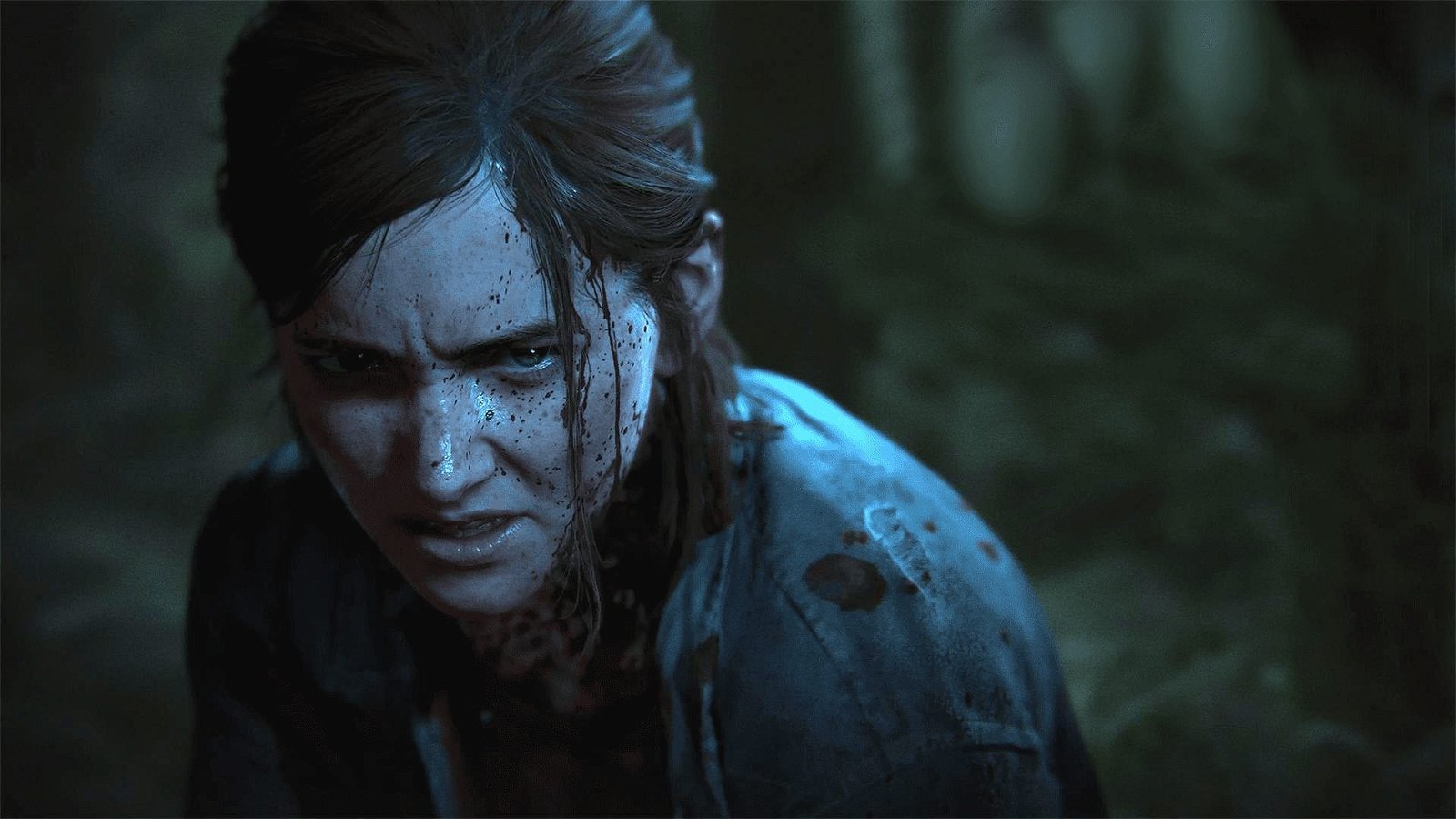Tears flowed from blind gamer and Canadian content creator Steve Saylor when he first booted up The Last of Us Part II – moments before any cutscene played, any character spoke or anybody died.
For him and many others, a simple list of options meant the world from one of this year’s most anticipated games. His controller was down, but spirits were high in the future of gaming for players with disabilities.
“This is why we do what we do,” Saylor repeated as he called back to decades of advocating for accessibility in video games. In Naughty Dog’s case, their latest anticipated sequel to 2013’s The Last of Us had not only pushed the boundaries of its world but had done so in reality for millions of gamers with a visual or motor disability. Its game experience had been made equally powerful through settings that aim to provide no compromises.
Saylor, who is legally blind with a condition called nystagmus, has shared his experiences to audiences for years with his own spin on a playthrough series. YouTube became his platform for holding studios accountable for their level of accessibility in games. Organizations including Can I Play That? continue to inform others about it in games to come. Since his first ever playthrough of Call of Duty: Advanced Warfare at CGMagazine in 2015, Saylor’s style has moved beyond identifying a lack of accessibility in games to making the changes himself with developers.
We sat down remotely with Steve Saylor to talk about The Last of Us Part 2 from its impact beyond scope, narrative and gameplay for gamers playing with disabilities.

CGM: How did the opportunity come along in creating accessibility features with Naughty Dog?
Steve Saylor: I was speaking at the GA Conference, which is a gaming disability conference. And it used to happen, kind of like right before GDC. It was like, almost like the day before, but it was in San Francisco when all the developers were starting to come in. And it was a whole day just devoted to accessibility and gaming. And they would bring in speakers and they would have panels about different people from all different sort of sides of the industry, from developers to advocates to consultants. And they would basically talk about topics within accessibility and a lot of developers would would attend this conference, and so I was asked to be on a panel last year in San Francisco, for that. Basically, about blind gaming.
As I was during one of the breaks, a few people from Sony and Naughty Dog came up to me and said, “Hey, we want to work with you.” And I was like, “Okay,” and then that’s how that like, that’s how they approached me. Just like that. From what I had heard from before was that they had already kind of worked consulting with other people as well. So it was it was like, they were just, they were there, just to see you, like, obviously, like see the talks, but also they, from what I’ve been told I was, that was one of the people that they wanted to meet. So it was really cool just to kind of like, basically chat with them. And yeah, and shortly thereafter, I got brought into consult.
CGM: Right when you were going into helping Naughty Dog with their accessibility features, were there any of the accessibility features you got to check off from your wish list?
Steve Saylor: One of them in the final version of the game that I absolutely did not expect and it was really cool when I saw the first time, it was the zoom feature using the touchpad on the DualShock controller. I’d always kind of wanted, like a proper zoom on not only just on consoles, but just in games themselves. Because there’s a lot of times I get it that text size increase or HUD scaling is not exactly feasible in some sort of like UI/UX experiences in those cases. Everyone was like “the touchpad is useless, you use it just to be able to open up the map or an options menu,” that kind of thing.
And when I saw how that zoom was implemented, I was like, “This is genius,” because all you have to do is – it literally as a touchpad. You just double tap the touchpad, it zooms in to however you want it and you can move your finger around the touchpad to kind of move the screen as you see fit. And it also doesn’t interfere with any other button press so you can still play the game, zoomed into a certain point if you need to.
So seeing the touchpad being utilized in that way, and there’s all a whole bunch of others like things that like the touch bar does. If you have a high contrast mode turned on, you can swipe left to turn it on and off at any given point. If you have your text-to-speech turned on, you can swipe up on the touchpad and it’ll tell you as a blind person, which is handy, whether or not you’re standing, your crouched, you’re prone, you’re swimming. And then it also gives you a readout of how much health you have left. There’s so many other settings that are absolutely amazing in this, but like just had been able to utilize the touchpad alone for all those features was really, really cool and it was kind of like the dream settings that I wanted but didn’t really realize that I had until I thought.
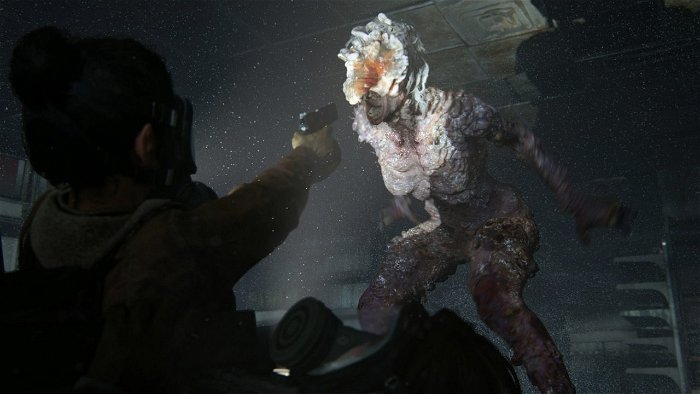
CGM: And compared to the very first game back in 2013, was accessibility something that was doubled-down on for The Last of Us Part 2 or did the second game completely overhaul it?
Steve Saylor: Oh, they completely overhauled it. It’s still the same gameplay that everyone is used to if you played The Last of Us. Naughty Dog tweaked it a little bit and added new features, and added a lot of improvements from the first one. But as far as accessibility wise, there really wasn’t anything (in the first game). I mean, there was, there was subtitles, which was great. And honestly, they actually had barred subtitles. But I think that was more of kind of a holdover from the PS3 days, and before people started to kind of make subtitles text smaller. So that was, that was kind of the only accessibility feature that it really kind of saw in the first one.
But it’s interesting that Naughty Dog really went above and beyond anything that I’ve ever seen. Essentially we saw the first game at the beginning of this console generation. And now we’re seeing (accessibility) at the end with Part Two, at the end of this generation. Just from those two examples alone, we’ve come a long way in regards to accessibility within the industry. This is going to be a moment where (for accessibility) where we’ll be talking about it. Everything before The Last of Us Part 2, and then everything after The Last of Us Part 2 for accessibility.
CGM: How else does The Last of Us Part 2 tailor to your conditions as a blind gamer?
Steve Saylor: It does a lot. The features that they have, especially when you turn on the game, there actually are presets that you can be able to turn on that will enable a bunch of settings depending on which disability you have. And so they have ones that are for blind players, ones that are for Deaf and Hard of Hearing players and ones that are that have motor disability.
And so that in of itself is like it enables it in a way that would allow anyone who has any type of visual impairment to be able to play. If you have no sight, you can be able to play this without any visuals. Anybody can be able to turn all those settings on and be able to play the game with your eyes closed. It will take a bit to get used to but you can definitely play through the game. But for me, there’s just a lot of different settings that made it a lot more easier and more comfortable to play because it had removed a lot of barriers that I normally have been playing games where I have to lean in close to the TV to see, or I’m having to sort of go down a difficulty level just because there’s certain areas that it just I can’t play because like my eye-hand coordination is obviously off.
So being able to kind of with all these settings like tweaking a little bit after like having all these settings On, I was able to lean back – which was the first time I’ve ever been able to do that in playing any game ever, and comfortably play and then enjoy the game as my friends would who wouldn’t who don’t have a disability. And it was it basically you just removed all barriers that I had when playing games. And if there was something that I was like, “Well, I’m having trouble here.” There was always a setting that can build to help find out the best way to build to get past it, or to figure out myself.
But that was the thing too, is that Naughty Dog had made it so that even with those settings turned on, it still was a challenge to play. It didn’t dumb down the experience or didn’t make it too easy for those who need those settings. It still felt like you were playing the game, even without having any need for those settings turned on. And that to me was a real driver. This is exactly the game that I have always wanted ever since I was a kid picking up a controller for the first time.
CGM: About how many conditions were addressed in The Last of Us Part 2‘s settings?
Steve Saylor: I can’t say for certain as to what specific conditions were met, but I do know that a pretty much majority, I think, if not all disability types were addressed. The consultants that they brought in were from different types of disabilities. Even for blind accessibility consultants, there was someone they brought in that had no sight, and then they brought in two others, myself included, that had a low vision impairment and so it kind of covered a lot of bases with just like consulting early on and bringing in people from different disability types and sort of then kind of providing, they’re able to provide feedback for it to kind of help build those settings. I’ve said before, it is the most accessible game ever.
If you have a disability, regardless of how severe or how light there is, there’s guaranteed something there that would allow you to be able to play. It may not be able to have everything that everyone’s ever wanted. There’s obviously tweaks that can be made and additions that could be added. I’ll say that’s probably the only critical thing I have about it. But the great thing about is that, like, Sony and Naughty Dog even took care of that as well. Anytime you turn on an accessibility setting, it tracks that information and is being sent to Sony and Naughty Dog so that they can be able to improve on those accessibility features either in future patches or in whatever the next project.
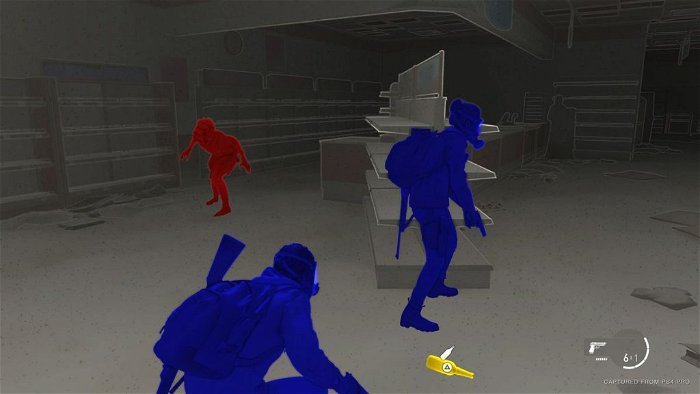
CGM: Thinking back on it, could you walk me through (that) moment when you booted up the game for the first time?
Steve Saylor: Yeah, how that came about: I was gonna be doing a review of the game so had received a review copy to play and I thought “you know what, for the review video itself I’ll record my reaction to seeing all the final settings for the first time and I thought it was gonna be kind of like a very quote-on-quote “hype” moment where I was getting really excited. I was going to be cheering and really happy and okay, I can use a little bit of that into the video itself.
When you boot up the game, it lists all the settings that it will that it will turn on and enable in the game. And because text to speech was on by default, when you boot up the game, I could hear the text to speech reading out all the entire list of accessibility settings. It was hearing that and also just thinking about my experience in being a part of consulting with with Naughty Dog and realizing how big of a deal this this really was. Even thinking back about a lot of us in the accessibility community have been pushing for this kind of accessibility for so long that we’re now finally seeing it.
All that went through my mind and essentially the floodgates just kind of opened.
I couldn’t stop crying for a solid ten minutes. Afterwards I was like, “I can’t put that in the video. There’s no way I could be able to. Like that’s just too too downer, even with the tears of joy that was that that was happening.” So it literally sat on my hard drive for a week-and-a-half. And it wasn’t until the night before the review embargo was was to go live. I was like, “You know what, I’m gonna edit it down because this could be a cool like, clip (maybe) for Twitter or something.” I edited down a ten minute file in two minutes. And even in the next morning I still was like I didn’t want to post it. I just felt like “no, I’m like, this is a little too emotional and raw for Twitter.” I didn’t I like I knew I was gonna get like, raked through the coals and people are gonna be upset about it.
Through the encouragement of some friends and family, they were like, “No, you’ve got to post this,” and so I did. I did not expect the reaction that it got. It’s been an insane like experience and it’s so surreal and I had like big like, people from Naughty Dog messaging me saying they loved the clip, Neil Druckmann himself commented on it and loved it. Ashley Johnson who plays Ellie she loved it. Hermen Hulst, the head of PlayStation commented on it, which was so weird. And he came back again and commented on it just like the other day and I can’t I can’t explain the feelings I have other than just, “I’m still in shock.”
CGM: Looking ahead: after being involved with The Last of Us Part 2, what do you think more needs to be done to make games accessible for everybody?
Steve Saylor: I think it’s definitely taking a look at what Naughty Dog had done and realizing that they can start early in development and bring in consultants. Essentially, because Naughty Dog did it in such a right way. It kind of creates a roadmap for other studios to duplicate. Because for a long time, even though like I said, with other studios, like it’s been kind of similar in kind of how they let people consult. As far as what feedback we were able to give, plus how else we can consult with other studios, depending on how much that feedback comes through, there’s not a lot of internal cheerleaders within the studio to really help push a lot of that forward in development.
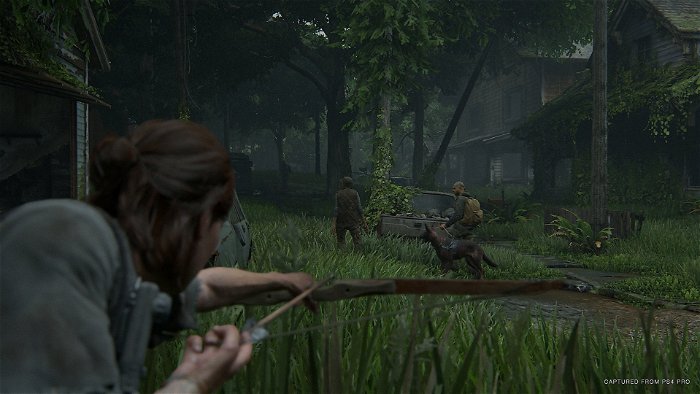
So this essentially, moving forward essentially will kind of give that roadmap for the studios to be like, “Okay, if we duplicate this model, we might be able to kind of catch up and and hopefully, now be able to compete as far as accessibility is concerned.” I hope that’s what the studios will take from that. And we’ll start bringing in more developers. Either that as consultants or hiring accessibility people internally within the studio. We’re starting to see that a little bit now.
I don’t know 100% what the future will hold but I do hope that at least studios will take a lot of what Naughty Dog did and just create a way that’s similar. That way, five years from now, I can be able to nitpick about what accessibility settings that they have instead of whether or not that game has them or not.
CGM: I have to know: since the big reveal by PlayStation, could you tell me your thoughts about the PS5 and what it might mean about the future of accessibility?
Steve Saylor: Oh, God, I can’t wait for the PS5. It just looks so cool. Oh my god.
Man, I am so excited for that and now more than ever, just knowing that Sony is now starting to take accessibility in a new direction. I don’t know what else they’re pushing internally for. But I do hope that Sony will be able to incorporate a lot of accessibility guidelines not only just within the PlayStation 5 but in their internal studios. First party studios. Because Microsoft has kind of taken a leap forward in that where all their first party studios have accessibility guidelines that they’re given. And they have an internal push for accessibility.
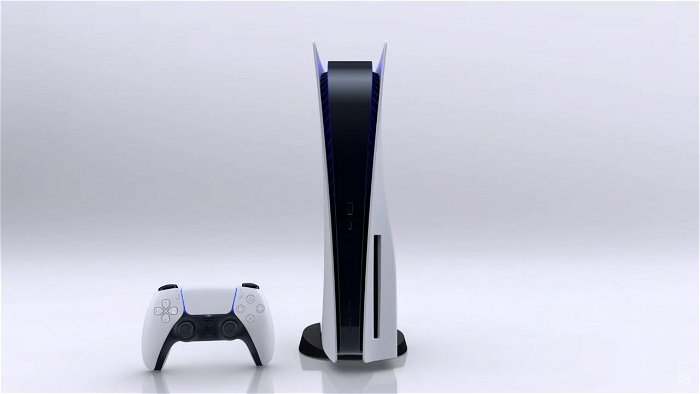
I really do hope that with the new generation of PS5, Sony will follow suit. and, In a way, I hope that it’s going to be an Accessibility Race – similar to a Space Race – where Sony and Microsoft are going to be trying to outdo each other in accessibility. The beauty of that, is regardless of like whether Sony or Xbox comes out on top in that regard, everybody wins. Because it just means more accessibility to more people.
The Last of Us Part 2 releases for PlayStation 4 on June 19, 2020, following up on the original game made for the PlayStation 3 in 2013. You can read out review here.
